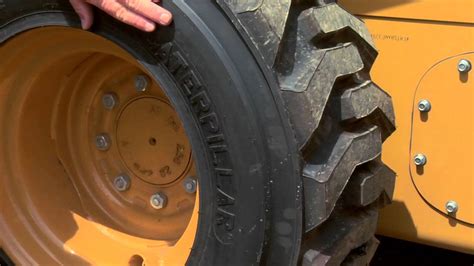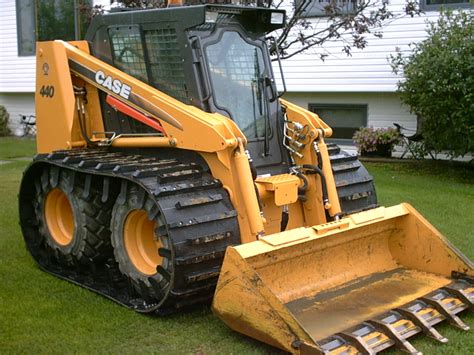radial vs bias skid steer tires "Radials are about 80 percent more resistant to cuts and penetrations in the tread area," says Mills. This is due to differences in construction between radial and bias-ply tires. A bias-ply tire is made of layers of rubber-coated, criss-crossed plies of fabric placed at angles of approximately 30 degrees. Nylon is the . See more Find a variety of attachments for Bobcat compact excavators to do more than dig. Learn about the features, benefits and applications of each attachment, from augers to hydraulic breakers.
0 · tires for skid steer rotation
1 · tires for skid steer loaders
2 · radial vs bias tires
3 · radial vs bias ply
4 · radial tires pros and cons
5 · bias vs radial wheel loader
6 · best tires for skid steer
7 · are radial tires better
CASE CX36B Excavators For Sale . New 5.5-Ton Case CX50D Mini Excavator Can Handle .
"Radials are about 80 percent more resistant to cuts and penetrations in the tread area," says Mills. This is due to differences in construction between radial and bias-ply tires. A bias-ply tire is made of layers of rubber-coated, criss-crossed plies of fabric placed at angles of approximately 30 degrees. Nylon is the . See moreThe difference in tire construction also has a major impact on traction. Since the bias-ply tire is constructed as a single working unit, when the sidewalls deflect, the tread squeezes in and distorts. "When the sidewall flexes, the middle of the tread actually lifts up," . See more
Tires are made of a conglomerate of different materials. In many cases, several types of rubber are vulcanized to produce the desired characteristics. If a tire is heated past this vulcanization temperature, it starts to deteriorate. "Once you overheat it, the . See moreRide quality varies dramatically between radial and bias-ply tires. Radials provide a smoother ride, while bias-ply tires offer more stability in the . See more
Calculating the total life-cycle cost of a tire is the only true measure that will enable you to lower operating costs. "One [common mistake] is . See more Most tires for skid steer loaders are pneumatic, and Sloan says 98 percent of . Radial tires dissipate heat better than bias-ply tires, which allows them to travel at higher speeds for greater distance. Most tires for skid steer loaders are pneumatic, and Sloan says 98 percent of them are sizes 10-16.5 and 12-16.5. A third popular size is 14-17.5. Though radials are the preferred choice on larger pieces of construction equipment, skid steer loaders mostly roll on bias tires.
Learn the difference between bias ply and radial tires, and how to choose the best type for your vehicle and driving needs. Compare the advantages and disadvantages of each design in terms of load-carrying, puncture-resistance, speed, handling and more.
Bias tires feature crisscrossed cords of material — usually polyester and nylon — placed at an angle to the tread’s centerline. Radial tires feature a casing made of rubber-coated steel cables that arc from one bead to the other.
Radial tires can perform, whether it’s a small loader, compact excavator, or mini skid steer. Advantages include: Reduced heat build-up: The design of radial tires minimizes heat generation, increasing their resilience during prolonged operation. “Compact equipment is still mostly bias, but operators see that radial tires are more durable, last longer and save money.” In fact, the radial market for general construction, road construction and ag applications like dairies is increasing. Learn about the different types of skid steer tires, their advantages and drawbacks, and how to select the best ones for your work environment and tasks. Compare various brands and models of pneumatic, solid, foam-filled, all-terrain, and winter tires. Learn the difference between bias and radial tires, their pros and cons, and how they are labeled. Bias tires have diagonal nylon plies and are better for off-road and trailer use, while radial tires have steel belts and are better for highway speeds and comfort.
Bias tires run on higher air pressure, making the machine bounce, diminishing accuracy and operator comfort. “Radials have less slip, which affects productivity.” Bias tires spin, causing the operator to lose time and be less productive.Radial tires are known for their greater flexibility and stability, resulting in improved traction, handling, and fuel efficiency. They also tend to offer a smoother ride. Bias tires are generally stiffer due to the diagonal ply construction. Radial tires dissipate heat better than bias-ply tires, which allows them to travel at higher speeds for greater distance. Most tires for skid steer loaders are pneumatic, and Sloan says 98 percent of them are sizes 10-16.5 and 12-16.5. A third popular size is 14-17.5. Though radials are the preferred choice on larger pieces of construction equipment, skid steer loaders mostly roll on bias tires.
Learn the difference between bias ply and radial tires, and how to choose the best type for your vehicle and driving needs. Compare the advantages and disadvantages of each design in terms of load-carrying, puncture-resistance, speed, handling and more.Bias tires feature crisscrossed cords of material — usually polyester and nylon — placed at an angle to the tread’s centerline. Radial tires feature a casing made of rubber-coated steel cables that arc from one bead to the other. Radial tires can perform, whether it’s a small loader, compact excavator, or mini skid steer. Advantages include: Reduced heat build-up: The design of radial tires minimizes heat generation, increasing their resilience during prolonged operation.

“Compact equipment is still mostly bias, but operators see that radial tires are more durable, last longer and save money.” In fact, the radial market for general construction, road construction and ag applications like dairies is increasing. Learn about the different types of skid steer tires, their advantages and drawbacks, and how to select the best ones for your work environment and tasks. Compare various brands and models of pneumatic, solid, foam-filled, all-terrain, and winter tires. Learn the difference between bias and radial tires, their pros and cons, and how they are labeled. Bias tires have diagonal nylon plies and are better for off-road and trailer use, while radial tires have steel belts and are better for highway speeds and comfort.
Bias tires run on higher air pressure, making the machine bounce, diminishing accuracy and operator comfort. “Radials have less slip, which affects productivity.” Bias tires spin, causing the operator to lose time and be less productive.
tires for skid steer rotation
tires for skid steer loaders

radial vs bias tires
radial vs bias ply
radial tires pros and cons

Browse through Kubota's KX018-4 Compact Excavators tractor inventory, filter .
radial vs bias skid steer tires|radial vs bias tires